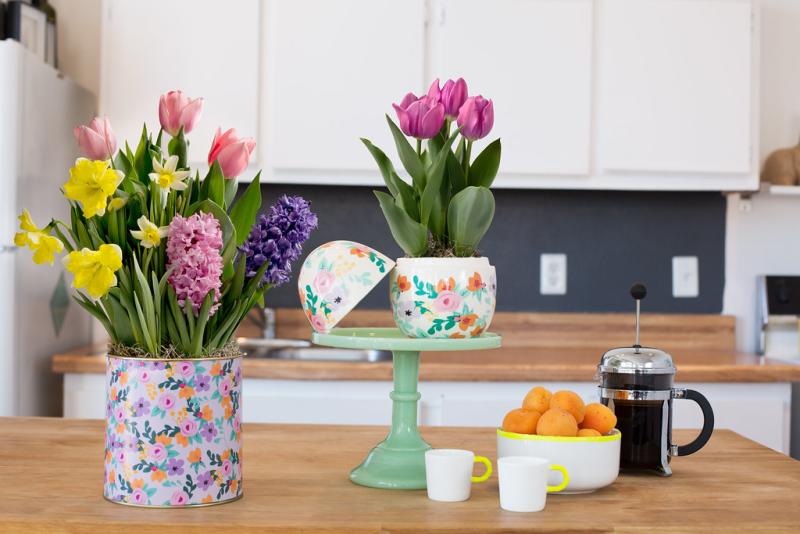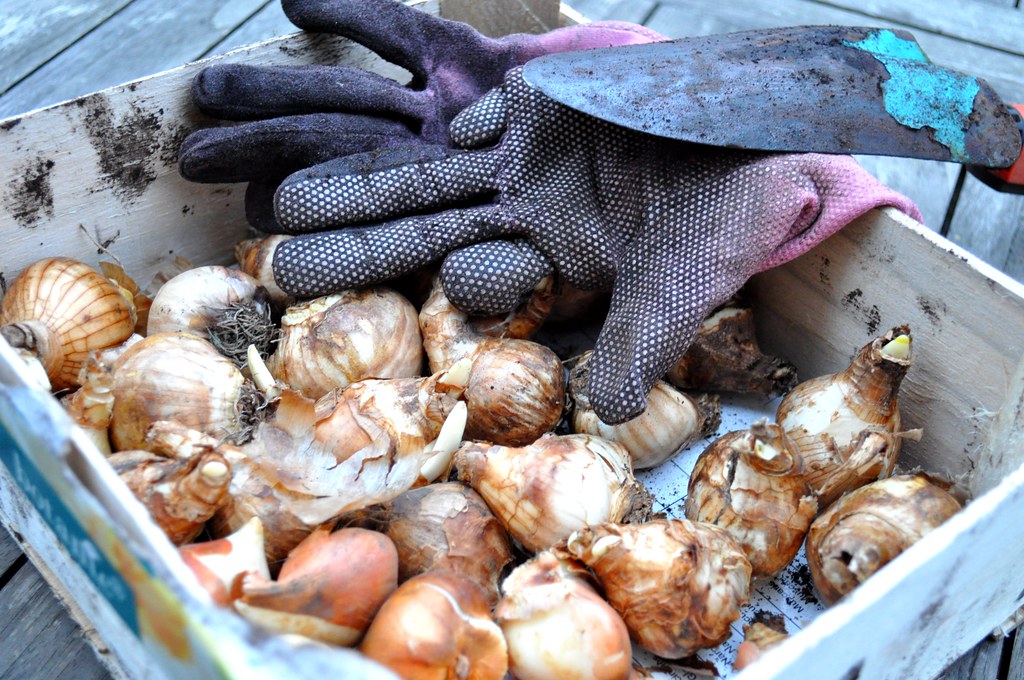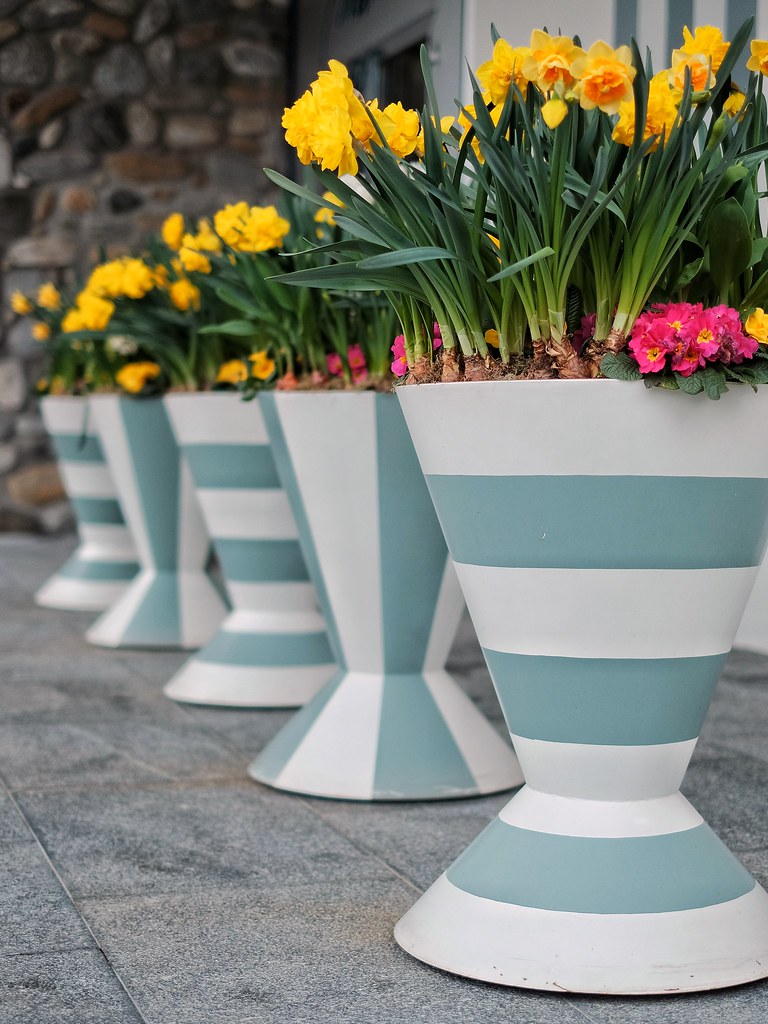
A colorful bowl of bright red tulips or yellow daffodils can bring a touch of spring to your home in the middle of winter. With very little effort, you can create several containers now and enjoy a good supply of flowers during the dreary days of January and February.
Many types of bulbs can be forced to bloom indoors including crocus, hyacinth, narcissus, scilla, muscari, and tulips. Forcing bulbs involves two phases; the bulbs develop a root system in the first phase and bloom in the second.
Planting Your Bulbs The first phase begins anytime from October through December 1. Choose the largest, firm, healthy-looking bulbs you can find. Next, look for shallow pots called bulb pans, which are wider than they are tall. Your bulbs don’t need a lot of area for root development and the size of a bulb pan is a good balance for the mature plant size. However, standard sized tall pots can also be used if you prefer them or can’t find bulb pans. Either plastic, clay or ceramic pots are fine. Make sure the containers you have chosen are clean and have adequate drainage.
The first phase begins anytime from October through December 1. Choose the largest, firm, healthy-looking bulbs you can find. Next, look for shallow pots called bulb pans, which are wider than they are tall. Your bulbs don’t need a lot of area for root development and the size of a bulb pan is a good balance for the mature plant size. However, standard sized tall pots can also be used if you prefer them or can’t find bulb pans. Either plastic, clay or ceramic pots are fine. Make sure the containers you have chosen are clean and have adequate drainage.
Select a well-drained potting mixture; one containing pest moss, perlite and vermiculite works well. Don't add fertilizer to the medium. The bulbs themselves contain enough nutrients to grow and bloom.
You will plant the bulbs close together. On average 15 crocus, 4-6 daffodils, 3 hyacinths or 6 tulips fit in a six-inch pot. A general rule of thumb for other types of bulbs is to plant half of the total surface area to bulbs, leaving about 1-2 times the width of a pencil between bulbs.
Fill the base of each pot with soil mix, planting the bulbs as the pots are filled. Don't push the bulbs into the pots as this will compact the medium below the bulbs and inhibit rooting. Plant the bulbs so their tips show above the soil line; leave the top ½ inch each bulb exposed above the final soil level.
Tulip Tip - When planting tulips, place the flat side of the bulb facing the outside of the pot. This will cause the first leaf of each plant to face outward and create an attractive pot.
Water each container thoroughly.
Cold Treatment
Before they will bloom, your bulbs need a cold treatment. Place the containers in a cold room, cold frame, unheated attic or cellar, or a spare refrigerator at a temperature between 35-48° F. Make sure the location you choose for cold treatment of your bulbs will not freeze.
If you are using a cold frame and it’s not warm enough to prevent freezing, a deep mulch can be used to protect the bulbs. Place the containers in the cold frame, then cover them with 10 inches of soil, and 10 inches of mulch, such as wood chips, hay or sawdust. You may also need to protect the bulbs from mice while they are in the cold frame. To do this, cover the containers with a sheet of wire mesh before adding the protective soil and mulch.
Hyacinths don’t like colder temperatures, preferring instead an area that maintains a 50-55° F temperature until their new shoots are 1.5 inches long.
Your bulbs should be kept in cold storage for a minimum of 12-13 weeks. Be sure the planting medium stays moist during this time as roots begin to form. Check them at least monthly and add more water as needed. After a minimum of 12 weeks, check the pots to be sure the bulbs are well rooted. It’s a good sign if roots are growing out the container's drainage holes. Small new shoots should also be present.
 Let the Blooming Begin
Let the Blooming Begin
Mark your calendar with the date to pull out the first container. For a continuous supply of flowers, bring in a few pots at weekly intervals. Bulbs can stay in cold storage longer than 12-13 weeks with no detrimental effects.
Bring the containers into a cool, bright room, 50-55° F degrees, and keep them out of direct light until the shoots turn green. Then move them into more light. Light and warmth will trigger the formation of leaves and flowers. On average the bulbs will flower in three to four weeks.
Hyacinths have a tendency for the flower stem to not elongate enough, making the flower stem short and hidden within the clasp of leaves. To encourage flower stem elongation, place your hyacinth containers in the dark for a few days or place a paper cone over the plant so the flowering stem will elongate.
Once the plant is in flower you can extend the bloom period by placing the plant in a cool location at night. Don’t place the containers of flowers in direct sunlight.
After flowering, plant the bulbs outdoors in spring, in ground beds. Or allow the bulbs to go dormant after flowering, by withholding water, then plant them outdoors in fall. They will not perform well as a forced bulb a second year.
Images:
- "Préparer le printemps - 2012-11-25" by fred_v is licensed under CC BY 2.0
- "Spring arrangement" by dan.boss is licensed under CC BY-NC-SA 2.0